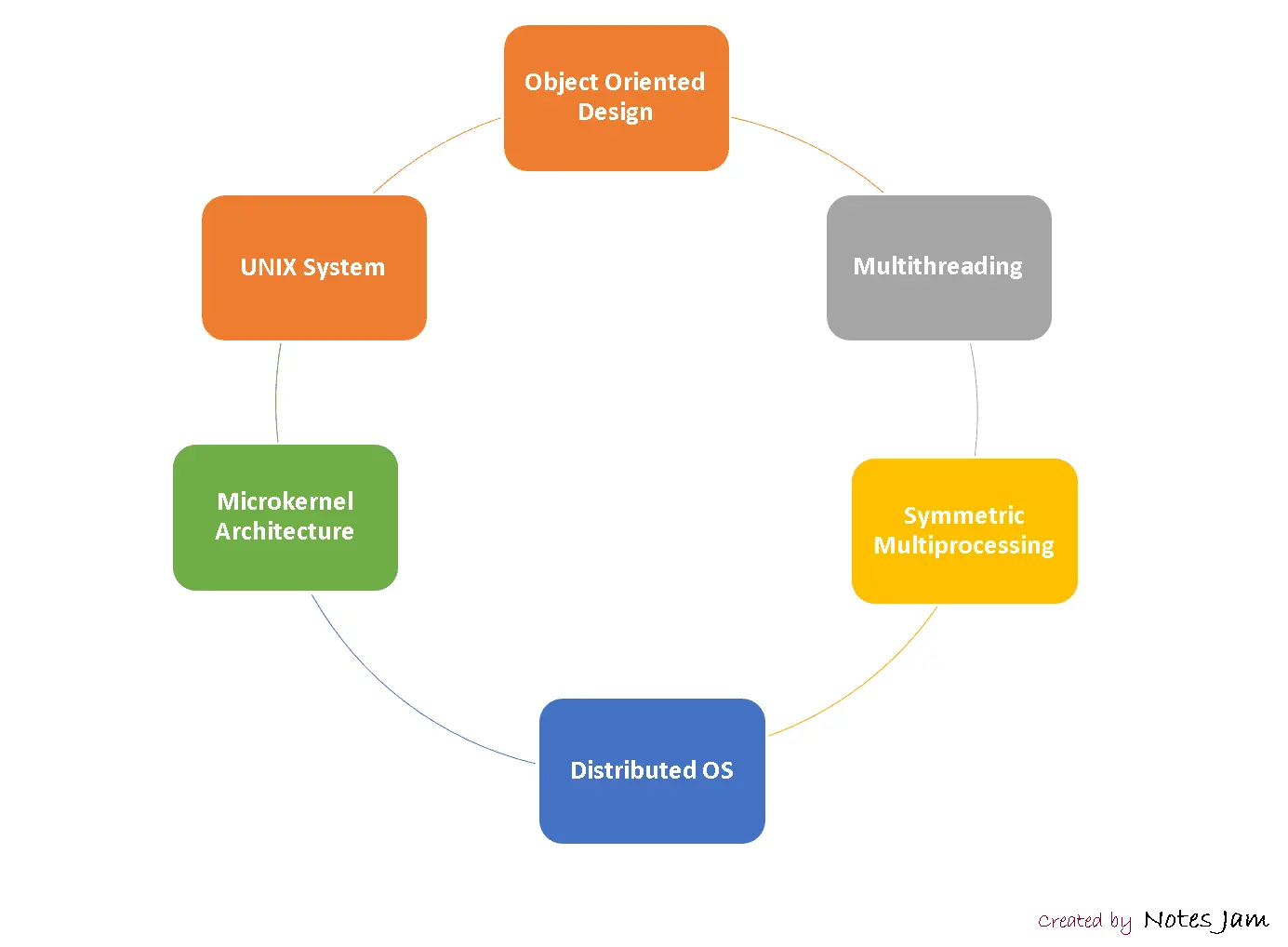An operating system is a fundamental piece of software that manages computer hardware resources and provides services for running applications. Modern operating systems have evolved significantly over the years and have a plethora of features that enhance their functionality, security, and usability.
In this article, we will explore the characteristics of modern operating systems that make them reliable, efficient, and user-friendly.
Table of Content
Object-Oriented Design
An object-oriented operating system (OOOS) is an operating system that is designed and built using the principles of object-oriented programming (OOP).
In an OOOS, the operating system is viewed as a collection of objects, each representing a different aspect of the system. For example, there may be objects for processes, files, devices, and users. These objects encapsulate their respective data and behavior and interact with each other through well-defined interfaces.
One of the key benefits of an OOOS is that it enables a high level of modularity and flexibility. Objects can be added, removed, or modified without affecting the rest of the system, making it easier to maintain and evolve.
In addition, the use of interfaces enables objects to communicate with each other in a standardized way, which reduces the potential for errors and enhances system reliability.
Multitasking and Multithreading
Multitasking is the ability of an operating system to run multiple programs or processes at the same time, allowing users to switch between them seamlessly.
In a multitasking environment, the operating system allocates CPU time to each program or process in small time slices, allowing each program to run for a short period before switching to the next program. This gives the illusion of multiple programs running simultaneously, even though only one program is running at any given moment.
Multithreading, on the other hand, is the ability of a program to perform multiple tasks or subtasks simultaneously within a single process.
In a multithreaded program, each thread can execute a separate set of instructions simultaneously, allowing the program to perform multiple tasks concurrently. This can improve program performance and responsiveness, particularly for applications that require heavy processing or input/output operations.
The combination of multitasking and multithreading allows modern operating systems to efficiently manage system resources and run multiple programs or processes simultaneously. This enables users to perform multiple tasks at once and allows for better utilization of system resources such as CPU time and memory.
Symmetric Multiprocessing
Symmetric multiprocessing (SMP) is a type of multiprocessing architecture in which two or more identical processors are connected to a single shared main memory and run a single operating system. In an SMP system, each processor can access any area of memory and perform any system task, such as running applications or managing input/output operations.
SMP systems are commonly used in servers, high-performance computing clusters, and desktop computers with multiple processors. In these systems, the workload can be divided among the available processors, allowing for improved performance and faster execution of tasks.
One of the key benefits of SMP systems is their scalability. As the workload increases, additional processors can be added to the system to handle the additional load, without the need for significant changes to the underlying software or hardware architecture.
This makes SMP systems ideal for use in environments where the workload is unpredictable or highly variable.
Distributed Operating System
A distributed operating system (DOS) is an operating system that runs on multiple independent computers and coordinates their activities as a single system.
Unlike traditional operating systems, which are designed to run on a single computer, a DOS is designed to support distributed computing, where multiple computers work together to achieve a common goal.
DOS is typically used in environments where a large number of computers need to work together to perform complex tasks. Examples include scientific simulations, weather forecasting, and large-scale data processing.
In a DOS, the different computers that make up the system can communicate with each other and share resources such as memory, storage, and processing power.
Microkernel Architecture
Microkernel architecture is a design pattern for operating systems that emphasizes minimalism, modularity, and flexibility.
In a microkernel architecture, the operating system is divided into a small, highly optimized kernel that provides only the most basic services, and a set of user-level services that are implemented as separate processes.
One of the key benefits of a microkernel architecture is that it provides a high degree of modularity and flexibility. Because services are implemented as separate processes, they can be added, removed, or modified without affecting the rest of the system.
Another benefit of a microkernel architecture is that it enhances system reliability and security. By isolating services in separate processes, faults in one service are less likely to affect other parts of the system.
Traditional Unix System
The rapid growth of Unix is due to many factors, i.e., its portability to a wide range of machines, adaptability, simplicity, wide range of tasks it can perform, its multi-user and multitasking nature, and suitability for networking.
The main features of the Unix operating system are discussed below
- Ability to support multi-user and multitasking.
- Excellent network environment.
- Adaptability and simplicity.
- It provides better security.
- Flexible file system.
